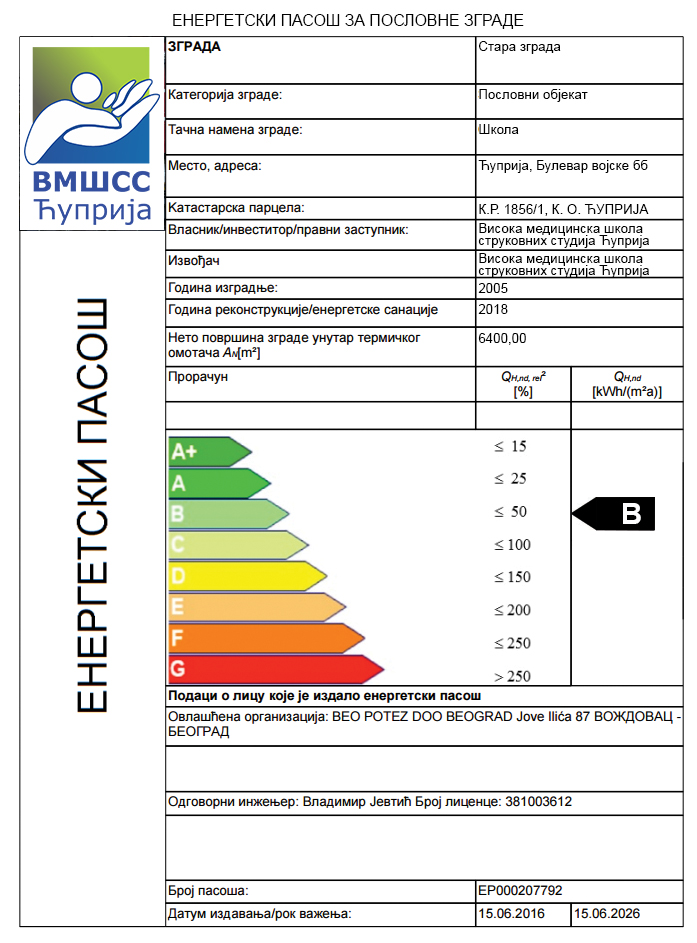Within the framework of securing and continuously improving the quality of work, College of Applied Health Sciences Cuprija besides the implementation of the ISO 9001: 2015 quality management system, has received an energy passport. In order to meet the key requirements of the environmental protection regulations, reducing the cost of energy whose price is steadily increasing; VMSSS Cuprija has recognized the importance of the most efficient design of the regulatory system.

Director of the College of Applied Health Sciences Cuprija, PhD. Christos Alexopoulos, stated that the “green school” is the future, highlighting the environmental measures taken at school. “We have reduced the use of resources needed for heating and normal school work, we have introduced gas heating, replaced the lighting with more efficient LED panels, and plans to improve the isolation and improvement of all rooms in the school. The European Energy Performance Standard sets the standards that must be adopted to improve the energy efficiency of the institutions as an obligation underlined by the Kyoto Protocol. These regulations require evidence of energy efficiency in the form of tests and certification of systems and equipment, with the key components of building components and systems for home automation. Components and systems of automation can be considered as the “brain” of the building and aim to maintain comfortable conditions and control energy consumption in order to achieve the most efficient operation of the facility. “- explained Alexopoulos.

On the road to European integration, all residential buildings, houses and non-residential buildings will be required to have an energy passport. The passport assesses the thermal coating, the exterior insulation of the building including walls, windows and doors, floors, ceilings, roofs as well as the utilization of solar energy, heating devices, hot water supply, mechanical ventilation, cooling and electric lighting. The goals are to reduce energy consumption and costs, to ensure quality in new buildings and to repair inefficient facilities, to increase the value of real estate and many others.